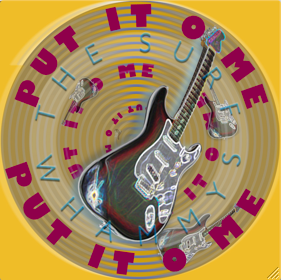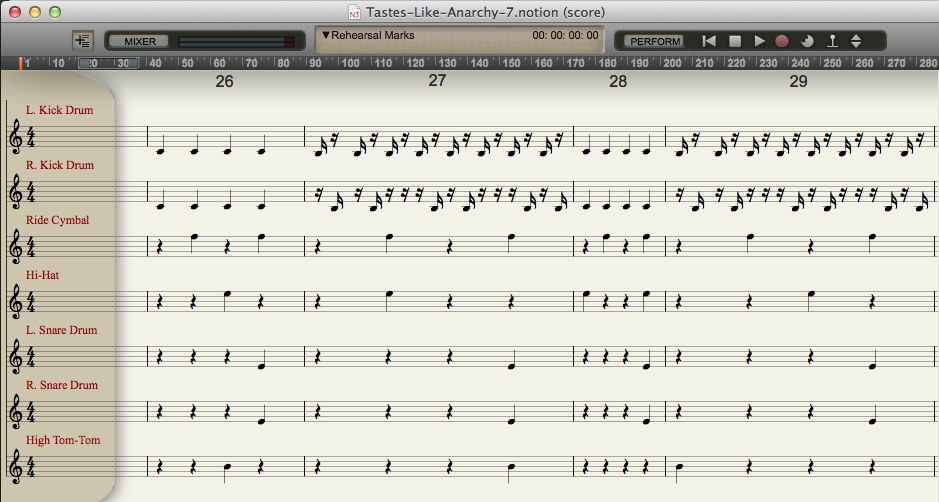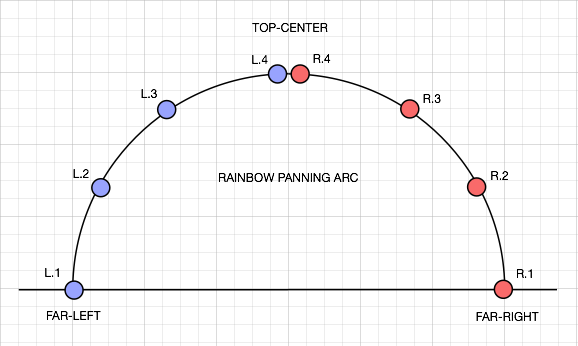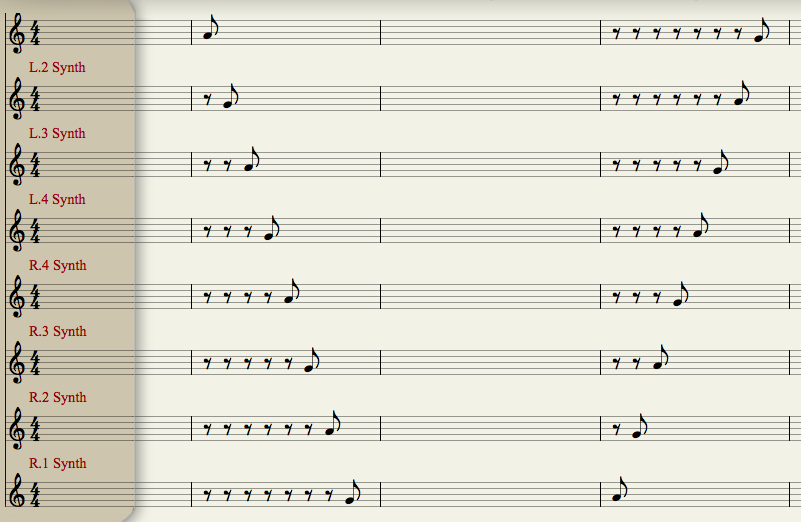[
NOTE: Continued from the previous post . . . ]
For the type of songs I currently am doing, I use the "Studio Tight" drumkit samples from SampleTank 2.5 XL (IK Multimedia), but sometimes I augment them with one of the Indian percussion samples, mostly (a) to get more tom-tom types of drums and (b) to get the tympani type of pitch variation on attack and release that is more typical of Indian percussion . . .
And after experimenting with different drumkits, the perspective I have is that there is no standard for mapping notes to specific drums, cymbals, Latin percussion, and so forth . . .
Hence my focus on what one might call the "workaround" aspect, which is a key part of the strategy here in the sound isolation studio, which is based on an odd type of laziness, where the general idea is to define a complete system that avoids having a lot of variables or at least minimizes the variables which cannot be avoided . . .
In other words, there are a lot of things that I would like to be possible, but within the specific framework of digital music production using NOTION 3, Reason, Digital Performer, ReWire, and a virtual festival of VST effects plug-ins and VSTi virtual instruments my focus is on defining everything in sufficient detail so that there are not so many variables that doing songs becomes too complex for it to be practical . . .
From a practical perspective, I do
not need 50 drummers and 1,000 drumkits, which makes a bit of sense when you consider it from the perspective of a real musical group . . .
I need a good drummer who has a drumkit that sounds good, and this is the strategy I use to provide a practical solution for the drumkit stuff, where the drummer and drumkit combination I like is heard in the following basic rhythm section for one of the Surf Whammys songs I am developing for the "Electric Underpants" album, which is fabulous . . .

[
NOTE: This is a headphone mix, and for reference it is the Surf Whammys response to "Hold It Against Me" (Britney Spears), which specifically was necessary to reintroduce a bit of order in the universe due to the chaos created by a particularly mind-boggling lyrical phrase in Britney's song, which to be specific is, "'Cause you feel like paradise, and I need a vacation tonight" . . . ]
"Put It O Me" (The Surf Whammys) -- Basic Rhythm Section -- MP3 (8.2MB, 301-kbps [VBR], approximately 3 minutes and 33 seconds)Fabulous! 
From yet another perspective, I think that it is more important at present to focus on discovering how to make everything sound good, since the music, lyrics, and instrumental stuff is coming along nicely, hence my focus on providing a practical solution for a calibrated full-range loudspeaker studio monitor system, which in turn is the prerequisite for being able to mix and master accurately, all of which is coming along nicely, although for reference none of the example mixes I have done so far are done with the final version of the calibrated full-range loudspeaker studio monitor system . . .
Lots of FUN! 
P. S. There is another perspective on this, and it is very important for composers, musicians, and singers to understand, since as best as I can determine it is something that none of them, including me, generally consider in any intuitive way . . .
What happens is that composers, musicians, and singers who are reasonably proficient tend to presume that arranging, producing, mixing, and mastering are trivial activities which can be done entirely based on intuition, which nearly never is the way it works . . .
Once you realize this and embark on an elaborate quest to make sense of the stuff that, for example, George Martin and the audio engineers at Abbey Road Studios did for the Beatles, sooner or later you discover the vastly annoying fact that there are no full-range commercial off the shelf (COTS) studio monitor systems on this planet, which with a bit of
sua sponte serendipity then leads one to discover that there are two types of listeners or "hearers" in the world, where one type are fundamental tone hearers and the other type of overtone hearers, with the key difference being that fundamental tone hearers are not fooled by the "Missing Fundamental" auditory illusion, hence require a calibrated full-range studio monitor system, all of which is explained in one of my ongoing project topics in the IK Multimedia FORUM . . .
Missing Fundamental Auditory Illusion (wikipedia)[
NOTE: The simple audio test created by the researchers at Heidelberg University for determining whether one is a fundamental tone hearer or an overtone hearer is found at the following link to the Hydrogenaudio FORUM . . . ]
How Do You Hear Tones? (Hydrogenaudio FORUM)The Fabulous Affordable Studio Monitor System Project (IK Multimedia FORUM)The connection to the original question is that when correctly mixed and mastered, a song using the NOTION 3 bundled instruments and add-on instrument libraries is quite likely to sound the way you want it to sound, thereby making discovering a way to do VSTi virtual instrument mappings to the Notion Music instrument libraries a bit moot, although it depends on what you need and your ability to manipulate the way instruments sound with VST effects plug-ins and other stuff . . .
For all practical purposes, I discovered how to play a few key instruments proficiently nearly half a century ago, and the only significant change since then is that I discovered (a) how to compose stuff in real-time on the fly and (b) how to compose and play textures rather than notes, which for the most part is like discovering how to turn the "Tone" control on a Fender Custom Shop Dual Professional electric guitar amplifier to 11 . . .
Yet, the songs I did in the digital music production universe seven years ago sound terrible, although at the time I thought they sounded great, which is where the arranging, producing, mixing, and mastering stuff comes into play, which is easy to observe by listening to a song I did seven years ago and then listening to the songs I am doing now, where the primary difference is the arranging, producing, mixing, and mastering, which is coming along nicely . . .
In other words, you can be a perfect choirboy, but nothing is going to work well until there is a choirmaster, which is the role George Martin played for the Beatles . . .
Explained another way, you need to determine whether you are (a) a
fundamental tone hearer or (b) an
overtone hearer, and if you are a fundamental tone hearer, then you can arrange, produce, mix, and master your own songs, but this requires a calibrated
full-range studio monitor system which has big woofers and can handle sound pressure levels (SPL) in the range of 80 dB SPL to 85 dB SPL at least some of the time, which in turn requires calibrating equipment and an SPL Meter, since listening with headphones will
not work, where for reference "full-range" maps to 20-Hz to 20,000-Hz and is the range of normal human hearing, for sure . . .
For sure! 






